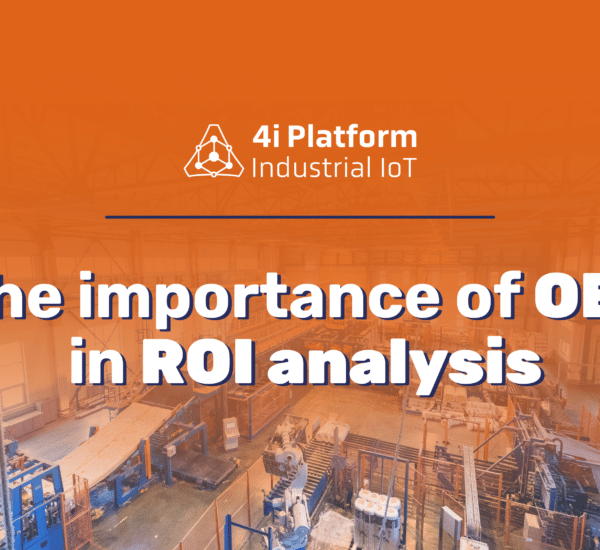In the vast ocean of technological innovations, the fishing industry has found its own treasure trove in the form of Industry 4.0. While we traditionally associate the digital revolution with sectors like manufacturing or logistics, its impact is radically transforming how fish processing plants, a crucial link in the supply chain, operate.
Automation, the Internet of Things (IoT), and artificial intelligence (AI) are optimizing every facet of production to enhance efficiency, quality, and sustainability. In this article, we will explore how technology is optimizing the fishing industry and how this impacts it.
The Fishing Industry: An Overview
The fishing industry is a cornerstone of the global economy, offering food and employment to millions worldwide. Food and Agriculture Organization of the United Nations (FAO) data indicates its substantial contribution, with an annual value surpassing US$400 billion.
Processes in the fishing industry include raw material capture, processing, storage and distribution of fish products. These processes have traditionally been manual and dependent on human skill, but with the advent of technology, they are undergoing a radical transformation.
Digitalization in the fishing industry
To understand how technology is impacting the fishing industry, we must first dig into the meaning of this term. Industry 4.0, also known as the Fourth Industrial Revolution, refers to the integration of advanced digital technologies into traditional industrial processes. This includes Internet of Things (IoT), artificial intelligence (AI), robotics, data analytics and cloud computing, among others.
Automation has been a mainstay in the fishing industry, especially in the evolution of fish processing plants. With the advent of Industry 4.0, significant strides can be made in improving process efficiency and productivity. Automated systems are increasingly driving processes from the initial sorting of the fish to its final packaging. Robots are indispensable in repetitive and demanding tasks like filleting or butchering, ensuring unparalleled accuracy and speed while enhancing safety and product quality.
However, the training of human personnel is essential for the configuration, commissioning and control of these machines. Companies must stay competitive by adopting new technologies and continually training their employees.
Artificial Intelligence: Optimizing Quality and Efficiency
Artificial intelligence (AI) is another essential component of Industry 4.0 in processing plants. Advanced algorithms analyze vast amounts of data in real-time, detecting patterns and anomalies imperceptible to humans. For instance, computer vision systems scrutinize fish parts, guaranteeing top-notch products reach the market. Similarly, predictive algorithms can optimize production planning and inventory management, reducing waste and maximizing operational efficiency. Ultimately, this translates into a significant improvement in plant profitability and competitiveness.
The Internet of Things (IoT): Connecting Everything for Efficient Operation
The Internet of Things (IoT) is taking interconnectivity to a new level in industry. Every machine, from processing lines to cooling systems, has sensors that collect real-time data on performance and status. This data is then transmitted to a centralized platform, where analysts pinpoint potential problems or areas for improvement. For instance, if a sensor detects a temperature spike in a cold store, an alert can notify the maintenance team to prevent fish quality deterioration. This proactive monitoring not only minimizes product loss risks but also ensures strict adherence to food safety standards. Tools like 4i Platform‘s SPC (quality control) or OEEasy (efficiency calculation) are pivotal in this implementation.
Sustainability and Challenges
However, despite the great technological advances that favor the industry, we cannot deny that sustainability has become a fundamental pillar. Optimizing energy consumption is vital, not just for future generations’ protection, but also for cutting company costs and meeting regulations. Embracing sustainable practices is imperative for ensuring the viability of fishing activities and the long-term health of marine ecosystems.
In this context, CEnergy, 4i Platform’s solution for energy consumption management, emerges as a crucial tool. It measures real-time consumption of resources like water, energy, and gas, enabling control and programmed alerts for deviations. This aids in identifying areas with excessive consumption, facilitating corrective actions to optimize energy usage. Of course, this also boosts the economic prosperity of these companies.
Warehouse optimization
The implementation of a Warehouse Management System (WMS) is key in the digital transformation of fish processing plants. A WMS is software designed to optimize and control all operations related to product storage and distribution. Integrating a WMS into existing technology infrastructure enables processing plants to enhance inventory management efficiency, minimize errors, and boost supply chain visibility.
With 4i Platform’s WMS, processing plants can automate tasks such as receiving goods, location-specific warehousing, order picking and real-time inventory tracking. In addition, advanced optimization algorithms can help minimize warehousing costs by ensuring that products are optimally located within the facility. This will not only redefine efficiency in warehouse management, but will empower the supply chain.
Conclusions
Industry 4.0 is unleashing a revolution in fish processing plants, transforming the way every aspect of production is carried out. From automation to artificial intelligence, the Internet of Things, and warehouse management systems (WMS), each innovation aims to enhance industry efficiency, quality, and sustainability. Fishing companies must embrace these technological advances and seamlessly integrate them into their operations to thrive in the digital age. Those that do so will be firmly positioned to thrive in an increasingly competitive and demanding marketplace. The technological revolution in the fishing industry is here to stay, and those who adapt the fastest will be the ones leading the way to a brighter and more sustainable future.





